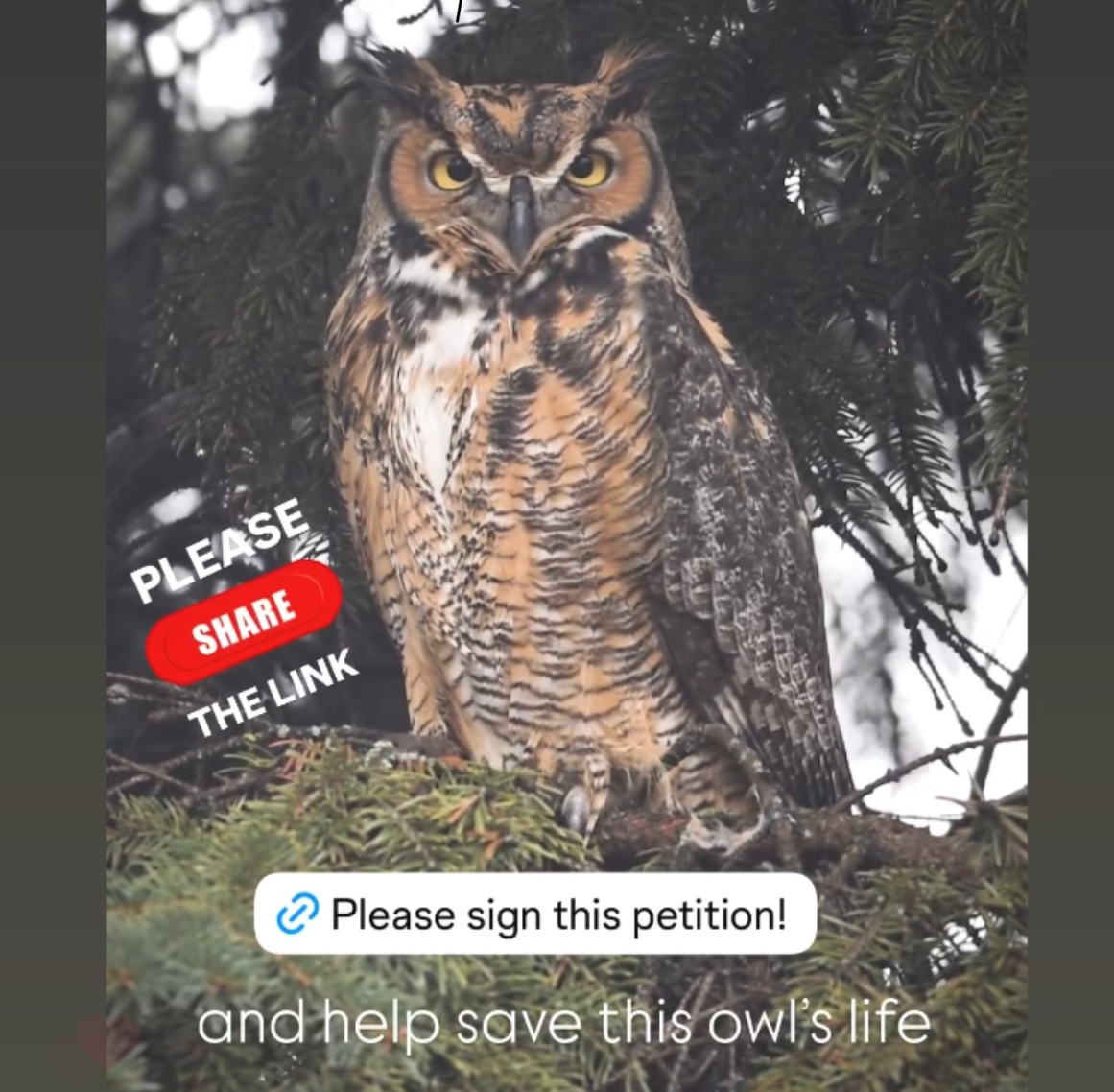Slow Birding: The Art and Science of Enjoying the Birds in Your Own Backyard is a push against the relentless drive to incessantly add to birding life lists; the book advocates for deep study in one area rather than spotting a bird and moving on to the next one.
Blood Red Eyes and Chilling Calls: Halloween Birding
Nature is full of awe and birds are a prime example of how fascinating the fauna on earth is. Some of this wonder, however, can come with a side of apprehension. Seeing as it’s Halloween, below are seven examples of how birds can be just a bit unsettling, whether it be the way they stare with those red eyes, their means of communication, or, in the case of the Loggerhead Shrike, their predilection for impalement.
Reduce Funding for Rodenticide in '25 Chicago Budget
Indigenous Peoples' Day
Volunteer opportunity: Speak up for birds!
How did Birds react to Cicadas?
This year’s cicada season has come and gone, and during the spring and summertime, birders across Chicagoland eagerly observed their favorite birds feasting upon two broods of periodical cicadas. You submitted some fantastic photos, and it was great to see how birds were reacting to the abundance of cicadas! However, some fledglings started to lose their eyesight, possibly due to eating too many cicadas.
The Islands of Illinois
How Pet Ownership Impacts Birds in Chicago: Best Practices for Responsible Pet Owners
Chicago’s dynamic urban environment, with its mix of parks, river walks, and green spaces, supports a diverse array of bird species. From the familiar Northern Cardinal to migratory species like the Ruby-throated Hummingbird, these birds play crucial roles in our city’s ecosystem. However, the presence of pets, particularly cats and dogs, poses significant challenges to these avian populations. Understanding the impact of pet ownership and adopting responsible practices can help safeguard our feathered friends.
The Urban Birding Festival Wrap-Up
The first-ever Urban Birding Festival, which ran from September 13th – September 15th, was an immense success! The festival offered a thrilling mixture of expert presentations, guided birding trips, educational workshops, and social gatherings. It was a fantastic opportunity for experienced and novice birders to learn more about avian wildlife and connect with others passionate about birds.
Getting to Know Juvenile Jaegers with the Macaulay Library
What to Know When Installing a Birdbath
The Impact of Rodenticides on Birds
With the deaths of the great horned owl family of Lincoln Park having been confirmed to be the result of rodenticides, it’s important to understand the devastating impact that rat poison has on birds of prey, and what solutions can be implemented to handle the brown rat population of Chicago properly.
Survey Results: DuSable Lakeshore Drive
Our recommendations:
Landscaping that supports native birds, including at least one new bird sanctuary, all with diverse plant structure (canopy, understory, shrubs and ground cover), many areas of plant density and good plant species diversity
Preservation of specific areas, i.e., Montrose Beach, Jarvis Bird Sanctuary, etc.
Creation of migratory bird habitat as a buffer between the lakefront and dangerous buildings
Creation of shorebird habitat on islands, if possible
Good News for Ducks not Dumps!
The Attorney General of Illinois joins the opposition to the U.S. Army Corps of Engineers’ proposed new 25-foot high dump of toxic dredged wastes to be built on top of the now closed confined disposal facility (CDF).The Confined Disposal Facility is a dump that juts out into Lake Michigan between two well-used birding locations, Steelworkers’ and Calumet Parks in Chicago. Our partners Environmental Law and Policy Center are suing on behalf of Friends of the Parks and Alliance of the Southeast to ensure that the Army Corps does not build a 25-foot tall dump at the site, which is slated to be turned over the the Chicago Park District. We held a rally to support them. Here’s a recap of the day.
A look at the Field Museum’s Ornithology Department
Have you ever wondered what happens to a salvaged bird after it’s been collected by the Chicago Bird Collision Monitors? They are added to the Field Museum’s collection for research and preservation by their Ornithology Department! Learn more about this process and how you can contribute to this ever-growing collection!
Two causes of pink in ring-billed gulls
Your help needed: Chicago's bird collision art project
A Review of Amy Tan's 𝘛𝘩𝘦 𝘉𝘢𝘤𝘬𝘺𝘢𝘳𝘥 𝘉𝘪𝘳𝘥 𝘊𝘩𝘳𝘰𝘯𝘪𝘤𝘭𝘦𝘴
Amy Tan has come out with a new book that she wrote and illustrated called The Backyard Bird Chronicles. This engaging read with beautifully drawn illustrations contains excerpts from Amy’s nine journals that she filled with observations. Only birds that entered her backyard airspace made it onto the pages.
Kings Grove/Sauk Trail/Schubert's Woods Bird Blitz Results ... and Brunch
Partnering for Birds – Grasslands
The Chicago area and in particular the Forest Preserves of Cook County (FPCC) are fortunate to have several different types of natural habitats that birds need to thrive. “Partnering for Birds,” a free publication created by the Chicago Bird Alliance in collaboration with FPCC, uses data from the Bird Conservation Network and eBird. The four different habitats detailed are grasslands (highlighted here), shrublands, woodlands and savannas, and wetlands.

























